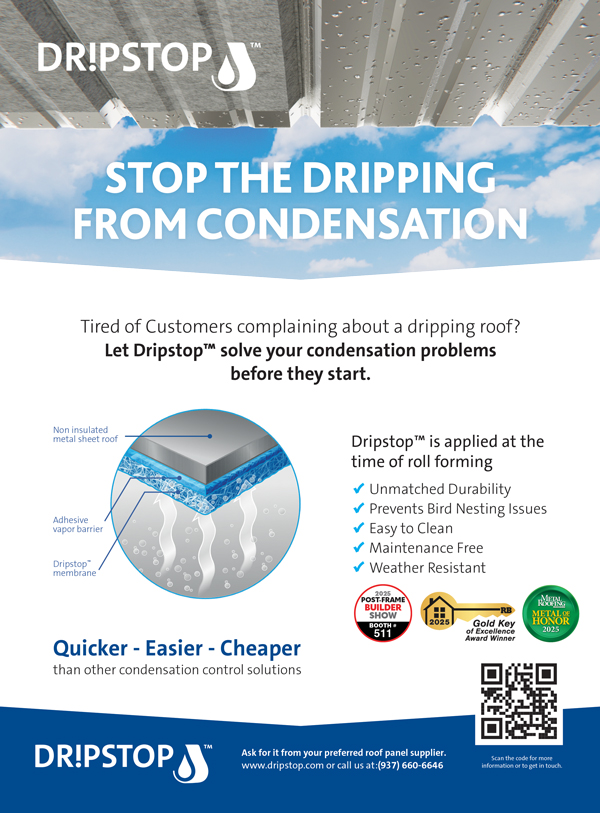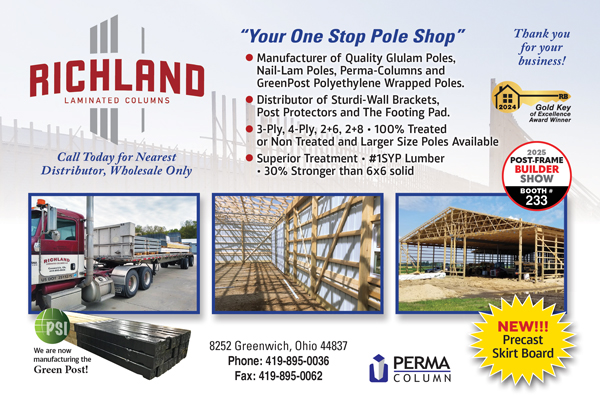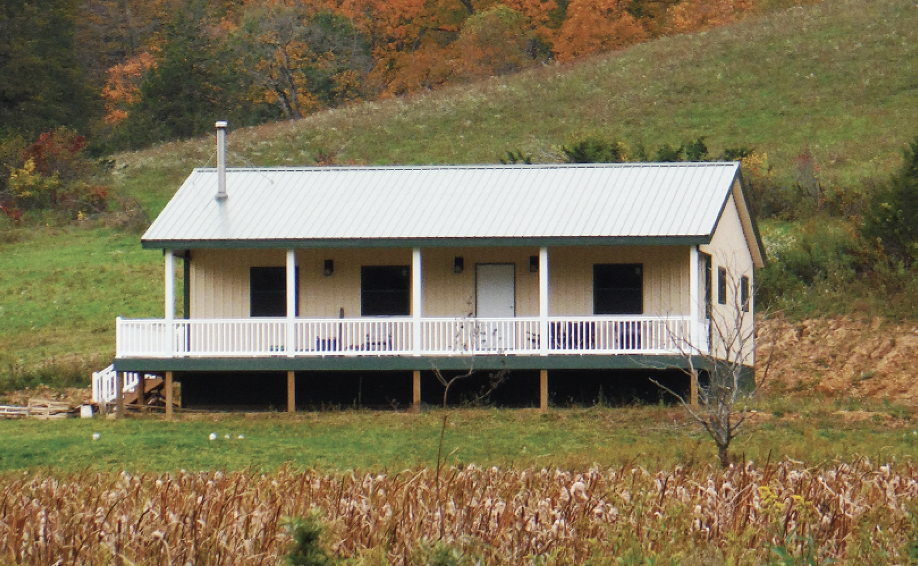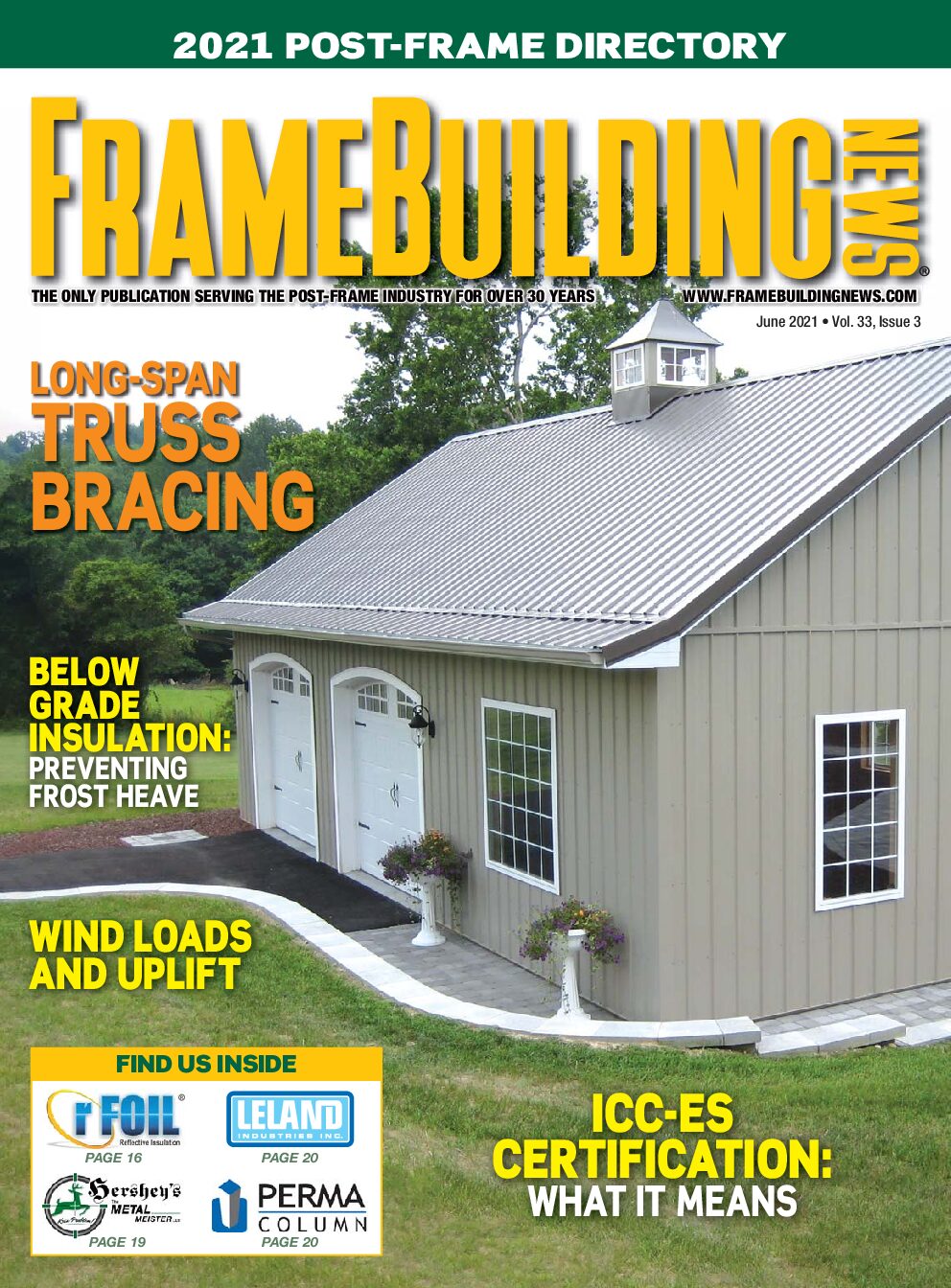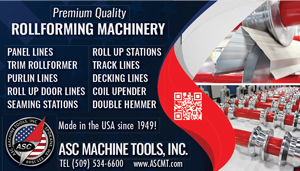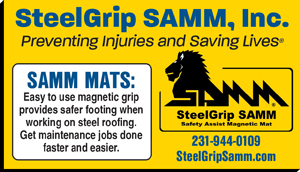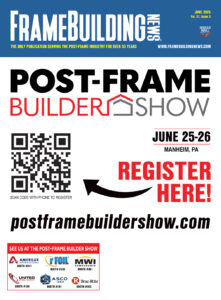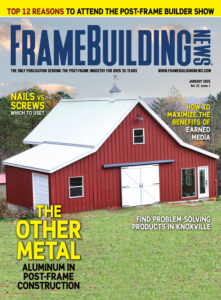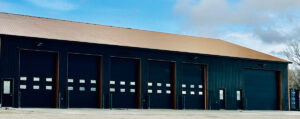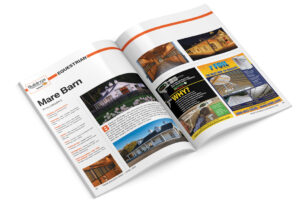Post-Frame Sales Tips That No One Ever Shared With You
By Mike Momb
Hansen Pole Buildings
In April of 1977, at 19 years old, I was working as “pickup crew” for Blaine Johnston Construction in Spokane Valley, Washington. If it needed to be done, it got assigned to me — build footing forms and pour them, set concrete forms for short stem walls and pour them, do fine grading, frame things up when framing crews neglected to do them (or did them wrong), hang some drywall, do siding, etc.
My Uncle Vern was hired to frame a custom home for one of Blaine’s clients. After Vern was done, the client wanted a dining room window moved a foot to the right. You can guess who got assigned. After spending a day moving said window, when I arrived for work the next morning, Blaine complemented me on a job well done, then sent me back out because client now wanted window moved a foot to the right from where it was originally. Again, a day spent making everything perfect. Next morning, it was Groundhog’s Day — déjà vu all over again, as the client wanted the window back where it started.
Even though I was getting paid for it, this insanity was more than I could deal with. My high school friend Brett Hansen was working assembling trusses at what was then Spokane Truss and suggested I apply there – got paid what I was making working for Blaine, work was inside (out of weather) and had regular hours. I put in an application during my morning coffee break and was asked if I could start right then! I told them I would have to quit my current job, so how would noon work out?
My first position was as a sawyer, running a Metra-Cut radial arm saw with a pivoting turn table. While physically demanding, I had experience in running cutoff saws from working summertime construction for my framing contractor Father and his brothers. A great incentive was when a sawyer cut 1,000 boards in an eight-hour shift, he could go home and be paid for an entire day’s work. At 6’5” tall, I also had large hands and found I could cut three boards at a time, flip them end for end (for next cuts), whereas our other two sawyers could only cut two boards at once. By end of a week, I was reaching quota before noon — but kept working anyhow, as I was raised to put in eight hours of work, when being paid for eight hours.
Now my friend Brett and I wanted to understand more about what we were building, so every afternoon, when we got off work, we would get addresses where our trusses were delivered and go see how everything fit together. This very quickly helped lead me to an opportunity.
After three weeks, my employer called me in and gave me a couple of choices. I could stay in my current position and have our two other sawyers kill me, or I could get transferred to their sister plant in Coeur d’Alene, Idaho, with an opportunity to work into their office. I picked Door B and was blessed to work for a Managing Partner who over two years let me do everything except write checks – I was in charge of all sales, production, purchasing, hiring and firing.
Being slightly competitive, any time I lost a job to another truss company, I was out seeing what they did differently with their trusses allowing them to beat me. My goal was to be best truss salesperson ever!
Fast forward to 1980, I had relocated to Oregon and by total fluke had added selling pole barn kits to my truss experience. Working for Mac Truss in McMinnville, Oregon, one of my pole barn builder clients was Harold “Hal” Mueller. One day Hal called me and asked if I would like to go to lunch with him and the greatest pole barn salesman of all time — Ken Farquhar. He told me Ken was selling over $4 million dollars of buildings a year! Well, I jumped at this opportunity to be able to pick Ken’s brain, as I knew I was certain to glean so much from him.
What I learned was far different from what I expected. Ken’s sales numbers were indeed as advertised; however, not because he had magical knowledge of pole buildings (he actually had next to no idea what it was he was selling).
Ken loved who he worked for. Four times a year, his boss would fly him first-class to Las Vegas and put him up in a suite. What Ken wasn’t grasping was his trips were comped by casinos, as he had a severe gambling addiction and could lose tens of thousands of dollars over a weekend. He would come back absolutely flat broke (or owing money) and would go out and hustle selling buildings like crazy!
Whether you are a post-frame provider or builder, I am going to share with you far more valuable information than what Mr. Farquhar shared with me.
You may ask, am I nuts? Why would I pass out “secrets” to competitors?
In reality, you are not a competitor. In my humble opinion, post-frame buildings are the best structural design solution for nearly any permanent low-rise building with up to 50-foot-tall walls, four stories, and clear spans up to 80 or even 100 feet. To grow to where I feel we should be, against competing structural systems, we need more well-educated providers and builders of high quality post-frame buildings.
Why should you listen to me?
Over a four-year period, I had clients order 1,006 fully engineered, custom-designed, post-frame buildings from me. Notice these were “clients” not “customers” and they “ordered” I did not “sell.”
1) Eliminate “Customer” From Your Vocabulary
According to Indeed.com, “Clients refer to people who purchase professional services from a business or company to satisfy a need or solve a problem. Customers are people who pay for goods and services from companies or stores without going into a formal business relationship with these establishments.”
Generally speaking, customers buy products (commodities) while clients buy advice and solutions. Additionally, clients are usually longer-term who are more loyal to you and will spend more money.
2) Don’t Sell the Steak, Sell the Sizzle
This phrase was coined by Elmer Wheeler 100 years ago. It urged salespeople to focus on experience around a product being sold rather than simply on an object itself. It means appealing to a buyer’s senses and emotions under an assumption this is what motivates most people to purchase.
When someone inquires about a building, what they are actually telling you is, “I have a problem (or problems) and I think a new building will be a solution.” You need to paint a picture in your client’s mind. This question gets there:
“What problems will your new building solve for you?”
Notice “your building.” Every time you mention “your building” (their building, not yours) it reinforces their ownership of it. In their minds, they are visualizing them using it, and their problems being solved.
3) Know Difference Between Features and Benefits
When I was a 1990s-era post-frame building contractor, one member of my sales team was Jerry Couch. Great guy, sold lots of buildings and he could rattle off features of our buildings literally forever (or until a potential client’s eyes glazed over).
It doesn’t matter if your buildings are gold-plated, if your client doesn’t perceive gold plating as being a benefit to him or her. Understand, everyone’s favorite radio station is WII-FM (What’s In It For Me).
Your client’s attention span, at best, will be three benefits. You know your client’s problems, so tailor your benefits to take away your client’s pain.
4) Dare to be Different
If your building is exactly (or apparently) identical to all of your competitors, it makes you a commodity. When you become a commodity, then price becomes why a client does or does not pick you.
Now your difference (or differences) has to be a perceived benefit to your client. Before you can be different, you need to understand what and who you are competing against. Research your competition (websites help to make this an easier task). Know them better than they know themselves. You might ask your client, “Have you spoken to anyone else about your new building in the past year?”
If no, you have a totally clean slate to work with — this client is yours to win or lose.
If yes, “Do you mind sharing with me why you did not order your new building from them?”
This tells you not only what mistakes not to make, but also (provided they liked other provider’s building) allows you to say, “Our building is just like XYZ plus we also offer/include __.”
Again, making sure your offering or inclusion is of benefit to your client. Resist any temptations to bad mouth a competitor, always play from your strengths (benefits).
5) Commit to Higher Standards
I want you to be highly successful. This means you are going to make money and hopefully not squander it (do not be like Ken). I want you to be able to keep this money, to be able to live a comfortable life, invest in your family’s futures, support causes you deem worthy and retire in a fashion you would like to enjoy.
- Under promise and overdeliver.
- Commit to only providing fully engineered buildings.
- “But engineering is expensive” …
Engineering is an investment, not an expense. It comes with multiple benefits. For you, if you provide an engineered building and it structurally fails, your engineer is responsible, not you (assuming, if you are a builder, you build to match plans). A good engineer will make you more money from efficient designs, than you will spend to hire them.
For your client, have them think of it as a one-time life-long insurance policy. It is their assurance every component and connection has been verified by a trained professional for adequacy against loads specified.
A P.S. Bonus
And you thought I was stopping at five? Just like those television commercials, “But wait, there’s more” … during your sales process, when you send anything in writing, always include a P.S. of benefit to your client. More often than not, they will read your P.S. first. FBN
Mike Momb has been Technical Director for Hansen Pole Buildings, LLC of Browns Valley, Minnesota for more than 20 years. His daily post-frame blog, as well as his weekly “Ask the Pole Barn Guru” column can be followed at the company website, www.HansenPoleBuildings.com/blog/.
To read more articles from the January 2024 edition click here.
To read more articles about post-frame post protection click here.



